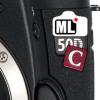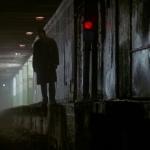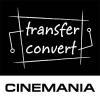Leaderboard
Popular Content
Showing content with the highest reputation on 11/22/2014 in all areas
-
@Comurit The 10% discount and relayed Q&A from Anamorphicshop that you arranged is more than enough positive input to the forum IMHO. I congratulate you in getting off your ass to represent the members here. People who can't see the bargain that they are getting before the discount need to get their heads checked I think. The price (without discount) is already very low considering the solution it offers to many lenses. People who already own projector anamorphics that fall below 70.1mm diameter will have the re-sale value of their lenses increased, so if they buy an FM lens or not they benefit directly from it's release. It also opens up the cinelux and isco type lenses to be used in a practical way - lenses that are (for now) considerably cheaper than most other anamorphic lenses out there. I'd go as far as to say that this product will also rejuvenate many lenses that have been dismissed in the past. Fixed focus lenses can now be transformed into single focus for example. It's a shame that not all can see the positive knock on effect that having this FM lens out in the wild...but they'd rather quibble over the already low cost. It's like complaining about Scarlett Johansson's lipstick colour, after she just kissed you.3 points
-
Just be happy with the discount. If this was a big company selling stuff, or a price of lets say €3000.... - I'd say push hard! That's not the case at all. The original asking price seems very fair. I haven't 'subscribed' to the list even though I'm really interested in this product. I'll gladly pay the full price if it delivers on it's promises.2 points
-
I don't know for people here, but for me I prefer Nikon putting its money in actual film makers than a flurry of techno geek bloggers that don't even have some short movie to their credit. I am actually talking about real short movies, with a story line, actors, props etc not just some random street shot assembled with some copyrighted music. The story style or plot might not appeal to many here but it is a mammoth task compared to some random shots. Nikon Europe also have the Nikon film festival where the winner gets a d810 and a trip to Cannes short film festival. For me I prefer that they put their money in actual film makers like in this film. It might not be to the taste of many, but it is ten time more constructive and creative than flying a bunch of bloggers to some exotic location to shoot some random flicks.2 points
-
Just out (Nov 20, 2014). Fixes various issues including some compatibility issues with the Sony A7S. For the update and details see (Windows version): http://www.metabones.com/article/of/MARK_IV_Firmware_Win For the mac version, see: http://www.metabones.com/article/of/MARK_IV_Firmware_Mac1 point
-

Lenses with character
andy lee reacted to fuzzynormal for a topic
There's plenty of affordable glass from the 70's and 80's that are decently sharp but still have lots of flaws/character. When I want "character" on the cheap, I go to my set of Pentax A110 glass. Some folks just don't like these lenses, but I've been having fun with them and, for me, they deliver on sharpness. I also use weird Russian glass when sharp isn't as important. The INDUSTAR-69 is cheesy and useful from time to time. By removing the focus limit screw (a little hardware in the lens) you can achieve some nice macro as well.1 point -
About "“4K, so what, it isn’t all about resolutionâ€. I'd extend your answer to point out that most 1080 is not really 1080 in actual resolution because of the space between pixels on a sensor and the resolution problems they create. This is obvious to anyone who pulls their hair out trying to eliminate moire! 4K, downscaled to 1080 virtually eliminates morie in most circumstances. More importantly, a pixel in any Bayer camera (which is all of them in video) only captures 30% of color information (red, green or blue) and borrows the rest from neighboring pixels. When you downsample 4K to 1080 you are getting 4 original color values into that pixel (averaged from the 4 in the 4K image). Hats off that you reviewed this camera! If I was shooting,say concerts in good light, this would be a hard camera to dismiss for the reasons you point out.1 point
-

FM lens discount
Cosimo murgolo reacted to richg101 for a topic
I was amazed by the price before discount and think it's pretty good of them to offer any discount considering most of their market reside here anyway!!! They will of had to order glass and metal manufacturing of 200 units or more to get the price to make their sale price viable. That's an awful lot of risk they're taking on board for a niche product. As far as image quality is concerned... Come on guys. Stop worrying - it's not hard to make two singlets of specific focal lengths, one of crown, one of flint so they correct each other. I imagine it would be harder to get the optics wrong than get them right. The fact that they've gone into manufacture of the glass will tell you it'll be worth it. They've showed more than enough proof of the image quality in tests. If they were asking £3000 I'd be a lot more critical but let's get realistic here. even if the optics degrade the cinelux resolving power by half, it's still gonna be delivering 4k resolutions.1 point -

V-Log on GH4 is coming
Juan Le reacted to PeterGregg for a topic
You mentioned DSLR, so I am guessing you have a decent understanding of the process to take pictures. You can shoot either a jpg image or a RAW image. With video though, you can only shoot what amounts to a jpg image in video mode. The jpg system in the camera "bakes in" the settings that you set the camera to work with, and in the process it clobbers the file making it much harder to "processes later in your computer. Video people have their own language and they don't call it processing the video, they call it "grading" the video. You know, like teenagers have their own language, video people have their own language :) So in an effort to do the very least clobbering of the file, and leaving as much of the information still to remain in the video, an effort is made to to do as little damage to the file as possible. To do this, the video is shot as "flat" as possible. This means little contrast, little color saturation, little sharpness - basically the most untouched the file can get. This leaves as much of the original data as possible to still be there to addressed and called upon when you get the video into the computer. Companies recognize this process and they try to help. Just like you would have color calibrations called vivid, portrait, landscape, natural, standard and so on, they add special color choices for video. Sony has s-log, Panasonic is adding v-log, and so on. It is as dumbed down as the file can get and still get recovered in the computer. The joke, or facts are, it still doesn't get as good as a raw file you would be using for pictures, and you are still using a partially baked compressed file that is just "less clobbered". In my pro work, I shoot raw for stills. For video i shoot as flat as I can get the video, but it still ain't no raw file. On the other hand, raw files for video are not easy to work with like raw files for still images. And there are not that many cameras that even offer it, plus the knowledge it takes to process the video - or "grade" the video is harder to do. Vlog is Panasonic's attempt to hardwire a very flat file for us to work with. They had CineD before this and I personally didn't like it. I found "natural" on the GH4 with everything turned to the flattest setting and for me is better to work with. In low light I like "vivid" with everything turned flat and seem to get lower noise. I am eager to see if this vlog will give a nice flat file to work with. For you, you need to remember your video shot in vlog will look terribly flat and bland. You will have to work it once in the computer, it isn't a set-it-and-forget-it type of setting. Hope that helps some. Peter1 point -

FOV perception between photographers and cinematographers
Cosimo murgolo reacted to JazzBox for a topic
Yes, of course it is me! I love that movie, exactly because for me it is a great example of cinematography. Joshua Caldwell made a great movie because he wrote a great story, he choose good actors, he made great compositions, great editing, great colors... and the DOF in his movie is always appropriate, it is never too shallow. I'm sorry If I gave an answer a little bit too strong to hmcindie, but I did not like the way he wrote me: I wrote something about the way MOST of the people (not all, obviously) use the full frame and I think that this way it is not very cinematic, it is simple too shallow for my taste and I can easily spot a 5D video when I see an extreme DOF, just that! It is the same when I see an exaggerate fisheye and I think: "it has to be a GoPro", because it is something very stylized. Maybe it is good for something, but when I watch an Hollywood movie I can see the eyes of an actor, and probably also the ears. In a lot of music video made with the 5D I can just see one eye and not the second, because it's out of focus, like the ears. But it has not that much to do with Canon 5D, it has to do with the shooter: with full frame you have to stop down the lens a little more then with APS-C. Of course great filmmaker do that and Joshua Caldwell did that, so his movie has a great photography. But a lot of people just don't do that: they know that 5D is a great low light camera, it has the possibility to give a shallow DOF and I think they became lazy about putting a light on the set and stopping down a little... maybe with A7s someone will start to make movies in absolute night without a single light, but it does not depend from the camera, it depends from a lazy choice of the shooter. Of course there is not a perfect camera that fit all situations and 5D is nonetheless a great camera: 5D with Magic Lantern is probably one of the best image quality for a budget filmmaker, but a good movie come from a lot of things, not just from a low light monster or from an exaggerate DOF. Ciao :)1 point -
First footage of the Blackmagic URSA at 80fps in 4K
duffman reacted to Glenn Thomas for a topic
If only the thing wasn't so heavy. I could easily get by without super low light performance, but 80fps at 4K, the global shutter and a 10" screen, those are some great features for a camera in that price range.1 point -
The Alexa will be available in 65mm format. I'll be interested to see how many productions shoot on it.. In terms of still photography, sure. But when it comes to cinema, you're using lenses that cost anywhere from $5k-$100k per lens (usually renting). Mostly, they're designed to cover S35mm as that's been the standard for a long time. Very few of the options are designed to cover larger sensors, many don't even cover the RED Dragon @ 6k! Slowly, newer lenses will start to be made with more coverage. Personally, if it's shoot on a 5D with Canon stills lenses and get a 'full frame' look or shoot RED or Alexa with Ultra Primes or Master Primes and 'end up with' a S35 look - I'm gonna go for the latter option (and have, many times). This is a creative question, and sure - if that's how you like to shoot that's fine. Personally, I'd rather ND and I tend to shoot no bigger than 2.0-2.8 when outside, as I don't generally like the look when we go shallower than that. At night, I try to stop down a little as I think it looks much better when you have a bit of depth at night. Adds a bit of production value. Of course you need the lights to be able to do this. Yes. But then, what's the point of shooting full frame if you're going to close down to make it look like S35 anyway? All manufacturers have slightly different sizes for their 'Super 35mm' sensors. It's interesting and kinda odd, however none are extremely different (in terms of full frame vs S35). They're all very close to S35, and the slight difference in measurements is barely noticeable. S35 is also close in size to APS-C. I used to think of S16 lenses as what I would get from S35 if I doubled the lens size - for example, when I put on a 12.5mm I knew I was getting something around a 25mm. A 25mm would get me a similar FOV to a 50mm, though with less DOF. I have no issue with someone using a system to compare to what they know. But there's also absolutely nothing wrong with using a smaller sensor size. We've been using S35 for years, and before that Academy 35. And we've been shooting on S16 for years! There are some absolutely beautiful films shot on S16, and many great commercials were. But you post on some of the forums on the internet and suddenly shooting on a Blackmagic Pocket is insane because the sensor is so small! We also had even smaller sensor for years in video cameras and were able to, in many cases, get beautiful images out of them. I guess I don't really care for the 'snobbery' of sensor size. Use whatever sensor size you want. But a 'crop' sensor (it's not a cropped sensor, the camera still uses the whole image) is not bad simply because it's smaller. Full frame is not inherently better just because it's bigger. If that's the way you like to shoot then that's totally fine, but I and others may not like to shoot that way! And that's also totally fine. I'll judge you based on your work, not the sensor you use to shoot it on. Some of us think that many films shot on full frame cameras are way too shallow for our liking, and may cause some to not get a full frame camera for that reason. And that's totally fine as well! On person's too shallow is another person's 'super cool' - just as one person's 'great lighting' is another person's over-lit. I personally own a full frame camera. But I won't be changing my shooting style because I've now got a bigger sensor. I will have to get my head around the differences in lens FOVs though.1 point
-
In relation to the original question: I think if a person uses one system exclusively they will get used to what field of view a certain lens or focal length gives them. That person has no need for knowing full frame equivalents or crop factors. But for people that use different sensor sizes you have to have some way of knowing what you are going to get. "Full frame" equivalent has become the standard way to do that. I get peoples point when they reject the term full frame: Using a system such as micro four thirds with a lens designed specifically for it is full frame in that context, but this is just an issue of nomenclature. Full frame or 35mm should really be called 135 format. Why not use super 35mm as a standard? well what is super 35mm really? super 35 is 24.89mm wide and was only invented in 1984. Until then academy 35 format was used which is 22mm wide. I would argue that if any of these should be a standard if should be academy 35 as more classic films were shot in this format, although whether anamorphic was used adds a layer of complexity. But why should we use these film standards when most cameras are APS-C which is 23.6mm wide? But then we cant forget that canon APS-C is smaller than all the others at 22.2mm wide. Even though their cinema line supposedly has a full super 35mm sensor. Then there’s the cameras that say they have a super 35mm sensor but don’t. Like the black magic production camera and the Ursa. Which are actually 21.12mm wide: Not even academy 35 never mind super 35. Micro four thirds is certainly no standard. You get a different sized sensor depending on whether you have a multi aspect ratio sensor like on the gh2 or are using a crop in 4k mode on the GH4. All this is just way too confusing. 135 format is the only one that stays the same with no variations and has multiple existing examples from different companies. It’s always 36mm wide. For that reason all crop factors relating to it have a fixed meaning. So I think it is the sensible option as a standard for describing field of view. There is nothing to stop people trying another way like using degrees, but you would have an uphill battle trying to get it established as a standard, and after all who really knows what 10 degrees field of view looks like. So for you personally there isn't much of a problem, you have already associated a visual field of view with its 135 format focal length. So you can think in that focal length, you then just work out the precise crop factor for the camera you are using and write down or remember which setting gives you which focal length. I try to think in 135 equivalents even though I have never owned a 135 camera.1 point
-
60 Seconds/160 Cuts -- B&W Short on Blackmagic Cinema Camera
Inazuma reacted to benjaminlebeau for a topic
I had some free time this past week, so I put together a fast-paced video for the Vimeo Weekend Challenge. The only rules were <60 seconds and had to be in black and white. Hope you like it!1 point -
Did you try in Natural instead of Standard? I find that Natural has lower contrast to start with so my guess was that it would be better for color grading. Especially since I read that many people shoot in Natural picture profile on the GH4 instead of the Cine-D. I shot with both cameras in neutral with C-3, S-5, NR-2 and got the same footage look that was easy to mix together. I did not do any tests though. Since the NR is awful in the LX100, I guess setting it to -5 is the right decision.1 point
-

Samsung NX1 Review - The glory of technology
GMaximus reacted to Andrew Reid for a topic
Check out some of my original H.265 files here http://we.tl/2c1MoV6tGM1 point -
1 point
-
More info with video of the firmware. http://www.newsshooter.com/2014/11/20/panasonic-gh4-v-log-picture-profile-spotted-in-the-wild/ quote from newsshoter " By technical editor Matt Allard: A GH4 on the Panasonic stand at the Inter BEE show in Tokyo today was running beta firmware with the V-Log picture profile. This Log profile is similar to the one in the much more expensive Varicam 35. This would be a very welcome enhancement for anyone trying to get the best possible image from the GH4, and a huge advantage for colourists trying to match the GH4 with other cameras. I spoke to a Panasonic representative who told me that the V-Log Picture Profile was only being tested at the moment and isn’t confirmed for the next firmware release. Interestingly enough though I did run into a Japanese shooter who had V-Log operational on his GH4. Lets hope that it is indeed scheduled to be included in Panasonic’s upcoming firmware update."1 point
-
More news from Rectilux... Rectilux 3FF will be available in two versions, the 3FF-S version (S for stealth) is the smallest and lightest of all Rectilux, designed specifically for Run n Gun operation and discreet shooting. Rectilux 3FF-S AnaFocus attachment features Floating Zone Focus as standard and supports 72mm filters. Coupled with fast, responsive smooth and slick single focus, you will never miss a shot. The pocket size Rectilux 3FF-S is the perfect entry level model for the world of CinemaScope shooting on a budget. Rectilux 3FF-S is guaranteed to fit 1 Möller 32/2X CinemaScope Anamorphot** type 2 Kowa Prominar Anamorphic 16-S 2X type 3 Sankor 16-C 2X type 4 Prima 16-CS 2X type 5 ISCO S8 2X (with infinity modification) more will follow Specification is at the website: http://www.transferconvert.co.uk/cinemania/rectilux-3ff-s.html VR product view is at http://www.transferconvert.co.uk/cinemania/rectilux-3ff-s-vr.html1 point







